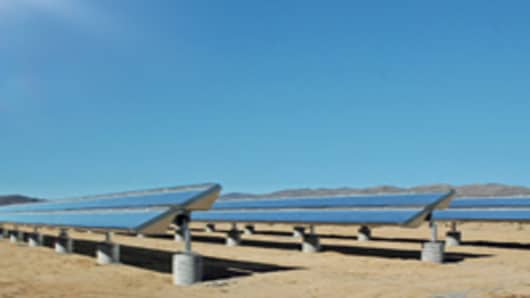In its bid to generate the cheapest electricity, one solar technology firm is finding answers in the production methods of the auto industry.
Silicon Valley startup Skyline Solar says it can use the country's existing—and widely idle—metal fabrication infrastructure to wring more costs from its product, making solar energy more cost-competitive.
"We're at grid parity in a lot of markets at retail prices," says Tim Keating, Skyline's vice president of marketing and field operations, comparing the price of power from his firm's systems to the cost of buying power from a utility.
Skyline's "high-gain" solar technology uses reflective metal troughs, the kind of metal work cranked out in the auto industry, to focus the sun's energy onto a typical solar photovoltaic cell seen in rooftop solar panel installations today.
But because the reflectors concentrate the energy by up to ten times that typical rooftop solar panel's exposure, only about one-tenth of the solar photovoltaic cell materials—the expensive part of a solar panel installation—is needed.
The rest of the Skyline solar array is the metal troughing and the racking system to keep it off the ground, as well as a tracking mount to keep the array facing the sun.
All of these components can be built in any metal fabrication facility, says Keating, for easy shipping and assembly for the installation crew, avoiding the handling of delicate solar modules and the building customized racks at a construction site.



